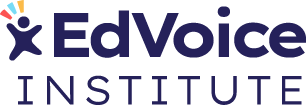Adequate and Equitable Funding
Futures filled with opportunity require an increase in public school funding.
California has made significant increases in funding public schools over the last decade, moving from one of the lowest-funded states in the country to being around the national average. It’s clear that funding matters: these investments have had a positive impact on student achievement and improved outcomes in math and reading, college readiness, and decreased suspension and expulsion rates. But there is still more to be done to ensure funds are reaching the state’s most vulnerable students.
We must increase public school funding–and equitable distribution of funds–if we are going to ensure that all students from low-income communities receive the foundational academic and social-emotional supports needed to succeed in college and careers.
California needs to use every public education dollar effectively and transparently to build confidence among California taxpayers and advocates.
Why It Matters
California educates more low-income students than any other state.
Six in 10 students in California schools live in low-income communities. Children from low-income communities often have more obstacles to overcome outside of school, including more food and housing instability, less access to healthcare, and more exposure to trauma. Their families don’t usually have the income to pay for additional academic, enrichment, and physical and mental health supports outside of school.
To make up for these challenges, more resources need to be spent on children from low-income communities, when compared to their higher-income peers, if we are going to achieve equal opportunity in California.
Overview of Policy Recommendations
- Provide adequate levels of base and supplemental funding to enable every student from low-income communities access to academic, social-emotional, and physical and mental health supports needed to succeed from early education to college and career
- Require more transparency in how dollars are spent at the state and local level, while also creating systems to help districts receive more funding directly for classroom usage
